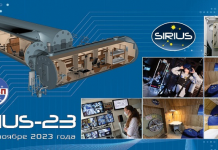80% of the satellite is expected to burn up in the atmosphere
Scientists are preparing for a “first of its kind” operation to safely return a dead satellite to Earth. We are talking about the meteorological satellite Aeolus of the European Space Agency ESA, which at one time became the first satellite designed to measure terrestrial winds on a global scale.

At a press conference, ESA scientists described how they will try to return Aeolus to Earth in a controlled manner. ESA Head of Space Debris Holger Craig said:
What we do is completely unique. You will not find examples of this in the history of space flight. To the best of our knowledge, this is the first time we have made such a controlled re-entry into the atmosphere.
The satellite was launched on August 23, 2018, at 00:20 Moscow time, from the Kourou cosmodrome located in French Guiana. It served its mission for five years, providing data to the leading meteorological centers in Europe, greatly improving global weather forecasts and becoming one of the most efficient meteorological satellites ever put into orbit. The satellite was permanently switched off in early July 2023.
the first attempt at a controlled return of a satellite to Earth
Since then, the Aeolus satellite has been falling to Earth from a height of 320 kilometers at a speed of about 1 kilometer per day, gradually accelerating, which provides a unique opportunity to perform a controlled re-entry attempt.
The operation to return Aeolus to Earth will begin on Monday, July 24th. By Monday, the satellite should descend to a distance of 280 kilometers from Earth. Initial maneuvers will bring Aeolus down to 250 km to place it in an elliptical orbit around the planet. Then another stage of maneuvers will follow, which will reduce it to 150 km. The last maneuver will be performed on Friday, July 28, lowering the device to 100 km above the Earth. Within five hours of this final maneuver, Aeolus will re-enter the atmosphere.
ESA Spacecraft Operations Manager Isabelle Rojo Escude-Cofiner noted that the satellite should fall into the Atlantic Ocean. As expected, only 20% of the satellite will survive the passage of the atmosphere, and 80% will burn up in it. The remains will remain in the ocean, it is not planned to get them to the surface.
So what is the point of all this complex operation? The development of such re-entry maneuvers is vital because of the gradual “overload” of the space immediately surrounding the Earth.
Craig noted:
We now have 10,000 spacecraft in space, of which 2,000 are not operational. In terms of mass, we are talking about 11,000 tons.
He added that about 100 tons of artificial space debris fall to Earth every year, and large objects return to the Earth’s atmosphere at about one per week. As time goes by, space debris is becoming more and more abundant, Craig said, and while falling debris from orbit has yet to cause property damage or injury, the possibility of such incidents cannot be completely ruled out. Aeolus’ controlled return to Earth should lay the foundation for future controlled return vehicles.



